Structural mechanics
Static / quasi-static simulation
Most of our customers’ components can be analysed using static or quasi-static calculations. Neglecting mass effects or, alternatively, using appropriately scaled equivalent loads, we perform virtual strength tests and identify optimization potential.
Whether pre-tensioning by bolted joints, anisotropic materials or large deformations of the structure – a large number of computational challenges require the use of a powerful simulation environment. With 20 years of professional experience in Simulia / Abaqus, we have outstanding expertise in this field.
The simulations also form the basis for calculating lifecycle predictions for the components to be developed.
- Proof of strength
- Thermomechanical and thermal analyses
- Shrinkage and warpage
- Geometrically and materially non-linear behaviour
- Screw connections
- Basis for the service life analysis
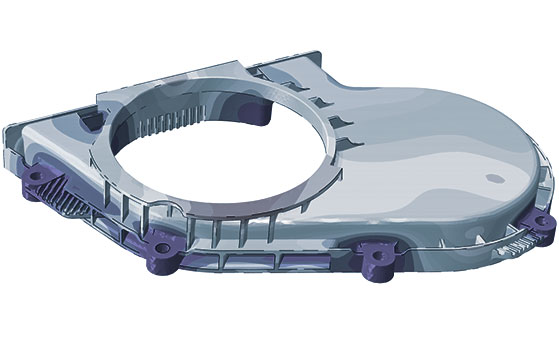
PLASTIC GEAR BOX HOUSING
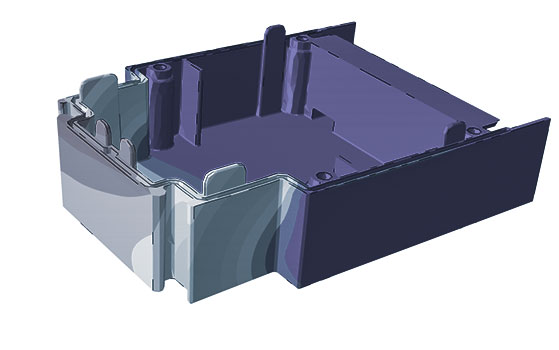
PLASTIC BOX
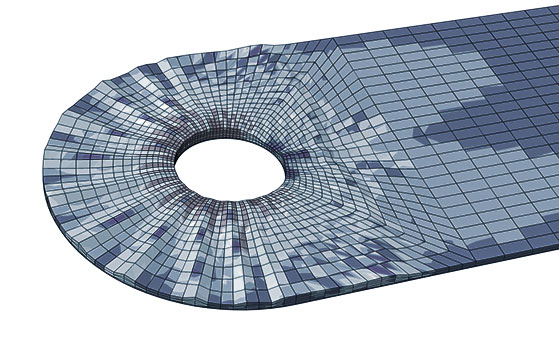
COMPOSITE TFP BEAM
Dynamic simulation
Natural frequency analyses can often still be carried out within the CAD environment. If the effects of mass and inertia play a larger role in the structural-mechanical design, then we the suitable partner!
We can efficiently analyse mechanisms or unstable systems, such as snap or lock mechanisms using contact models.
In addition to solid structures, we also simulate the interaction of liquids in containers under dynamic excitation (sloshing). Both, the transient analysis of shock loads and the harmonic analysis of the steady state can be performed realistically.
Joining processes with large deformations, e.g. for seals, are also calculated dynamically.
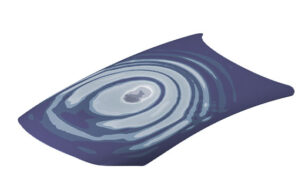
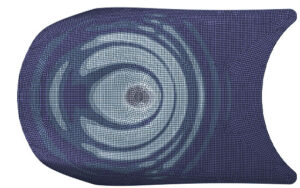
WAVE PROPAGATION IN A BONNET UNDER VIBRATION EXCITATION
- Calculations of the structural dynamics
- Natural frequency analysis of solid structures & liquids
- Shock and vibration analyses (transient or harmonic)
- Stationary vibration, frequency response behaviour
- Coupled multiple field problems e.g. tank sloshing
- Analysis of unstable systems, such as snap mechanisms
- Wave propagation after impact or shock
- Joint simulation of sealing systems
Crash / Impact simulation
A special field of dynamic analyses are crash and impact processes. In short-term dynamics, we have many years of experience both at the overall vehicle and component level as well as on specimen level, where high speed material tests are accompanied by simulations.
Special material models for crash simulations are available or can be developed by us. Complete vehicle models of cars and trucks are also available.
Crash simulations show their cost-saving potential, particularly when preparing for tests.
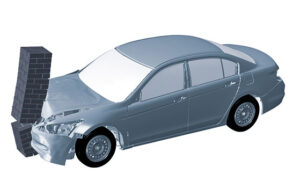
FRONT CRASH
- Progressive damage analyses of metals, composites and ballistic replacement bodies (e.g. gelatine bird)
- Own material models (subroutines)
- Strength verifications and design studies
- Wall, side and barrier impact and pile intrusion
- Integration of new components in complete vehicle models and analysis of their influence
Multi-field simulation
Located between the classic sub-areas of solid-state and fluid mechanics, multi-field simulation combines the advantages of both numerical disciplines.
Wherever liquids interact with the wall of their transport vessel and the behaviour of both partners is to be analysed, the so-called multiphysical simulation is the focus.
Whether bird or ice strike on aircraft structures or impact loads on filled vessel structures – our many years of experience in this area will help to solve your specific problem.
- Hail and bird strikes
- Combined modelling Euler / Lagrange / SPH
- Impact loads on filled tank structures
- Identification of cavitation issues
- Determination of the influence of lightweight designs
- Optimisation of the composite layer structure in parametric design studies
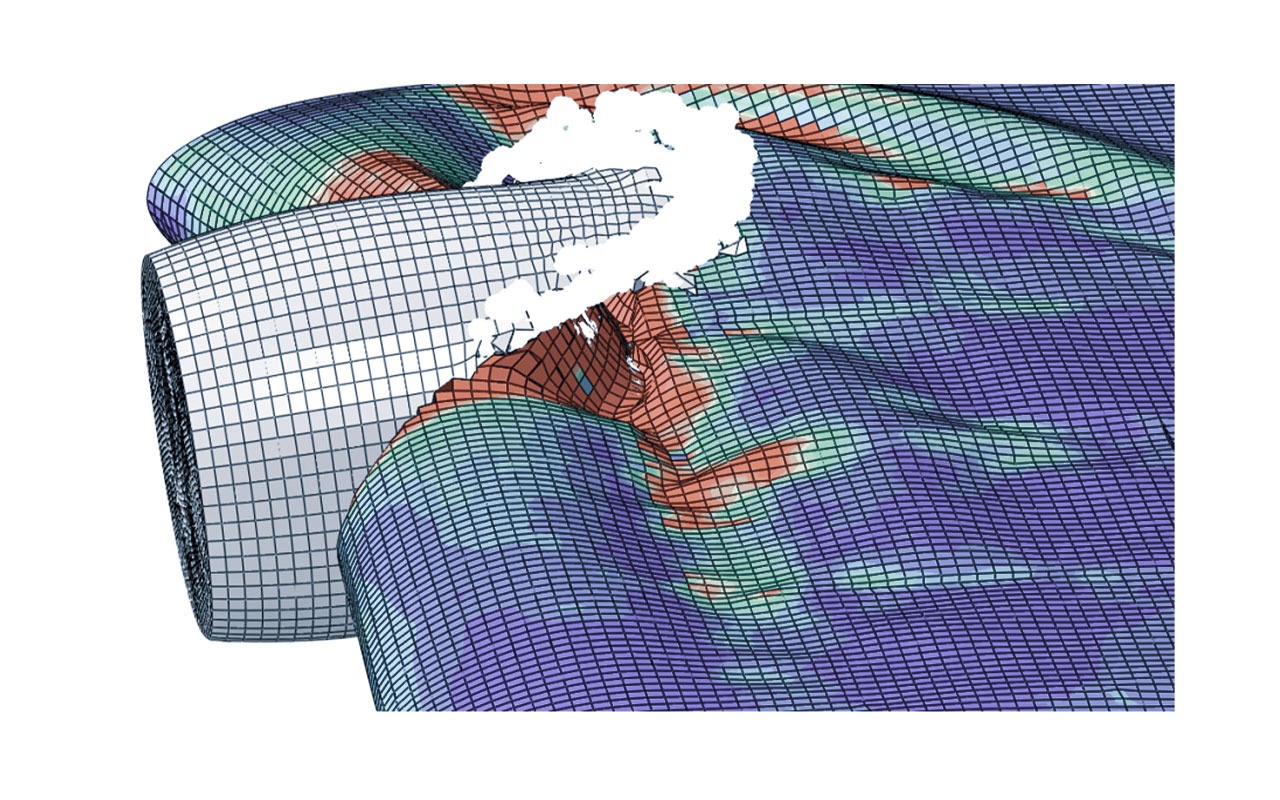
BIRD STRIKE
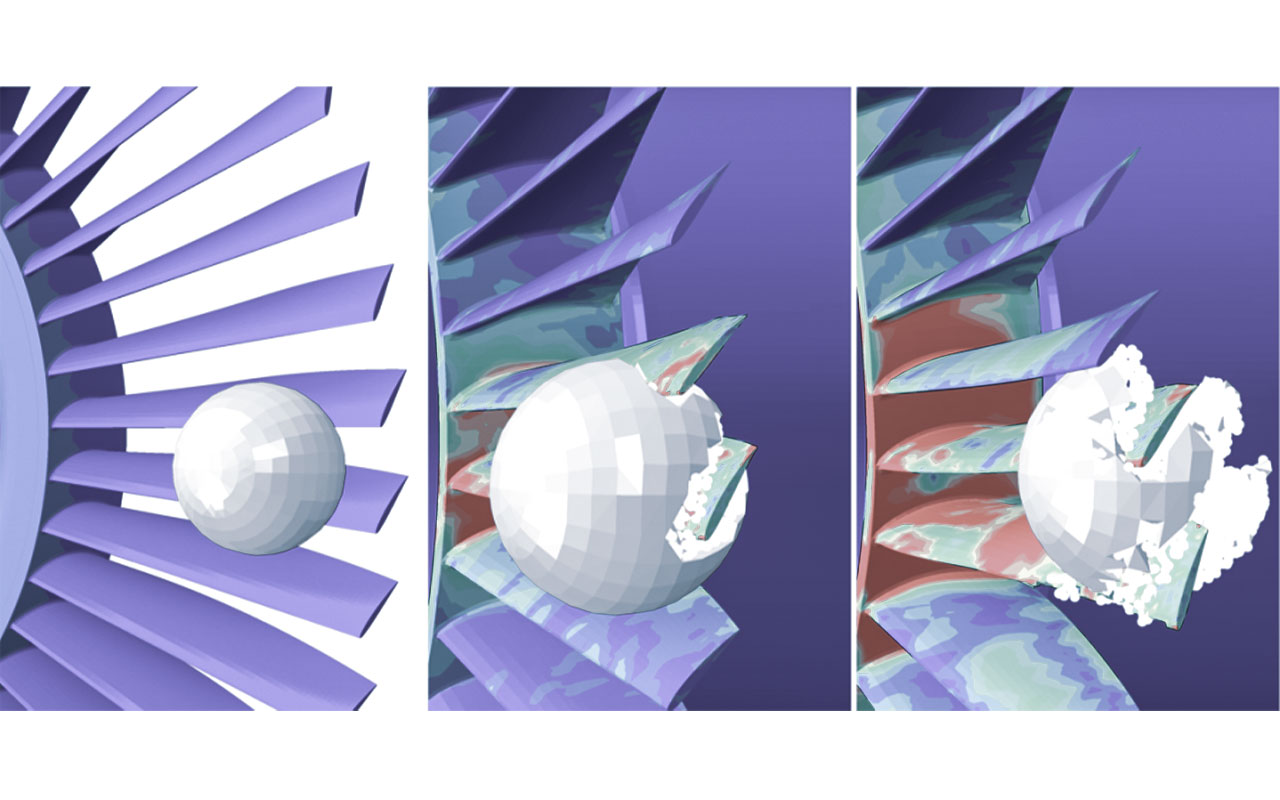
HAIL IMPACT
Process simulation
A product cannot be better than the process behind its creation!
The deep understanding of technical / technological correlations leads to great potential for optimization. Knowledge of the relevant influencing factors allow to reduce cost-driving tolerance requirements and to better understand the performance of your product.
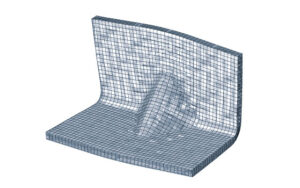
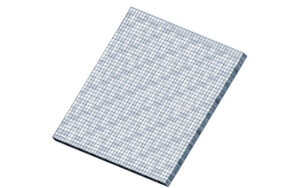
FORMING OF A COMPOSITE ORGANIC SHEET
- Forming simulation (e.g. organic sheet, deep drawing, hole forming, clinching, punch riveting)
- Filament winding simulation (e.g. loss of thread tension when overwinding)
- Investigation of process-relevant imperfections
- Determination of process-related and material-related influencing factors in variant studies
- Residual stress analysis during the curing process (spring-back, sping-in)
- Derivation of distortion-compensated tool surfaces
- Prediction of the surface quality (Class-A) during hot pressing or classic curing as well as identification of the cause of waviness
Composite lifecycle prediction
Composite structures are said to have a longer lifecycle than their lightweight competitor aluminum. In addition to the actual material advantages, however, this is often due to the oversizing.
If the load collectives are known during component development, we can support you in dimensioning your components in accordance with fatigue. Our self-developed model for computational fatigue analysis is based on the Cuntze failure mode concept.
With the stress effort as a damage parameter, the critical loads are analysed and the local stress conditions are determined.
From a universal S/N surface system, featuring static strengths, synthetic S/N curves can be generated in order to predict the fatigue strength.
- Lifetime analyses for composite materials based on Cuntze’s fracture mode concept and static strengths
- Implementation in early development stage possible, as static strengths are initially sufficient
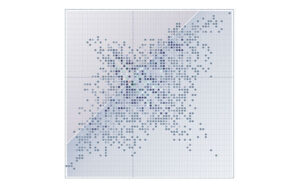
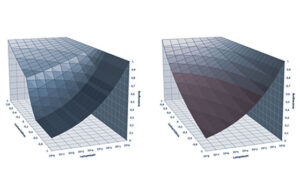
RAINFLOW DIAGRAM & S/N SURFACE SYSTEM
